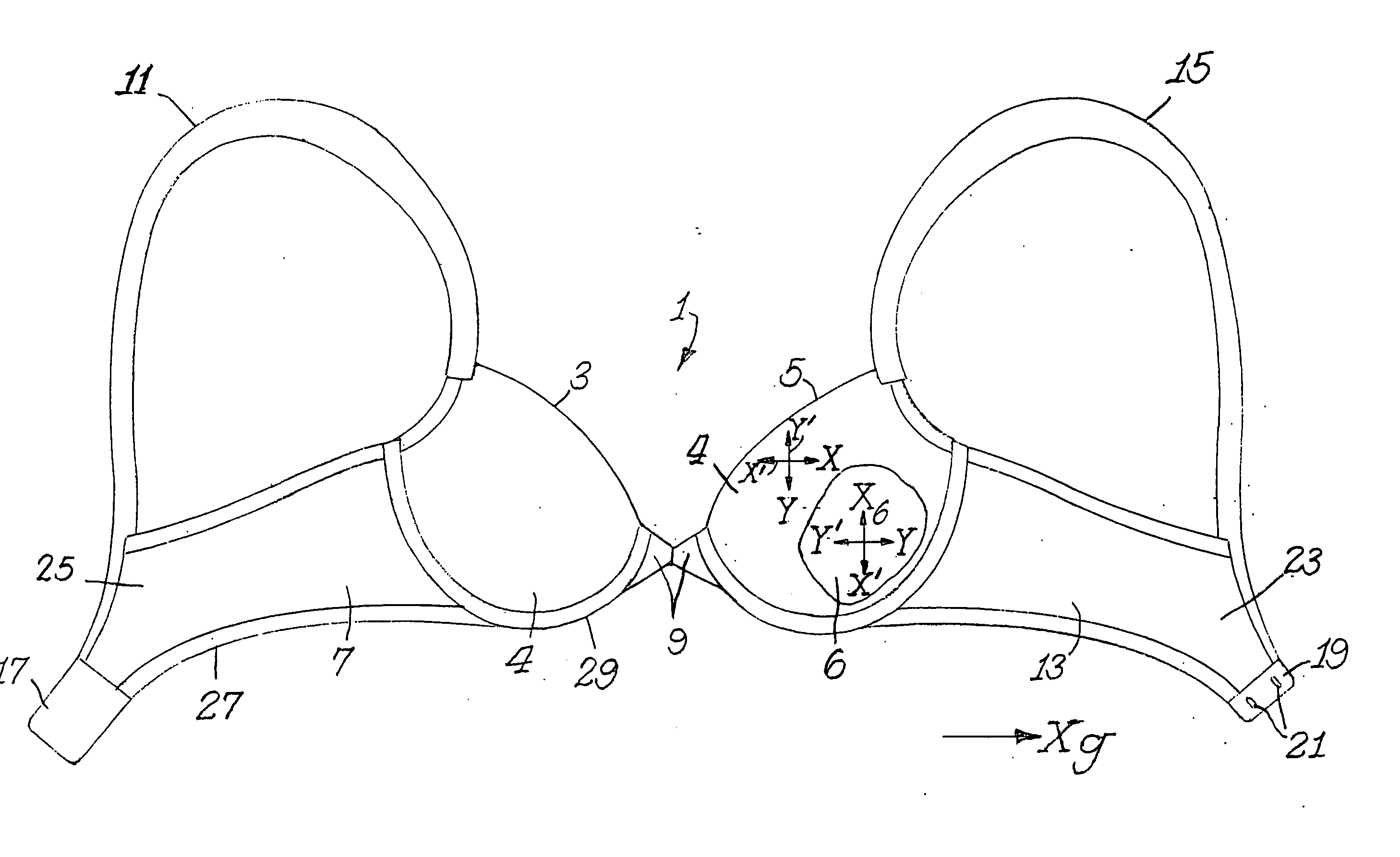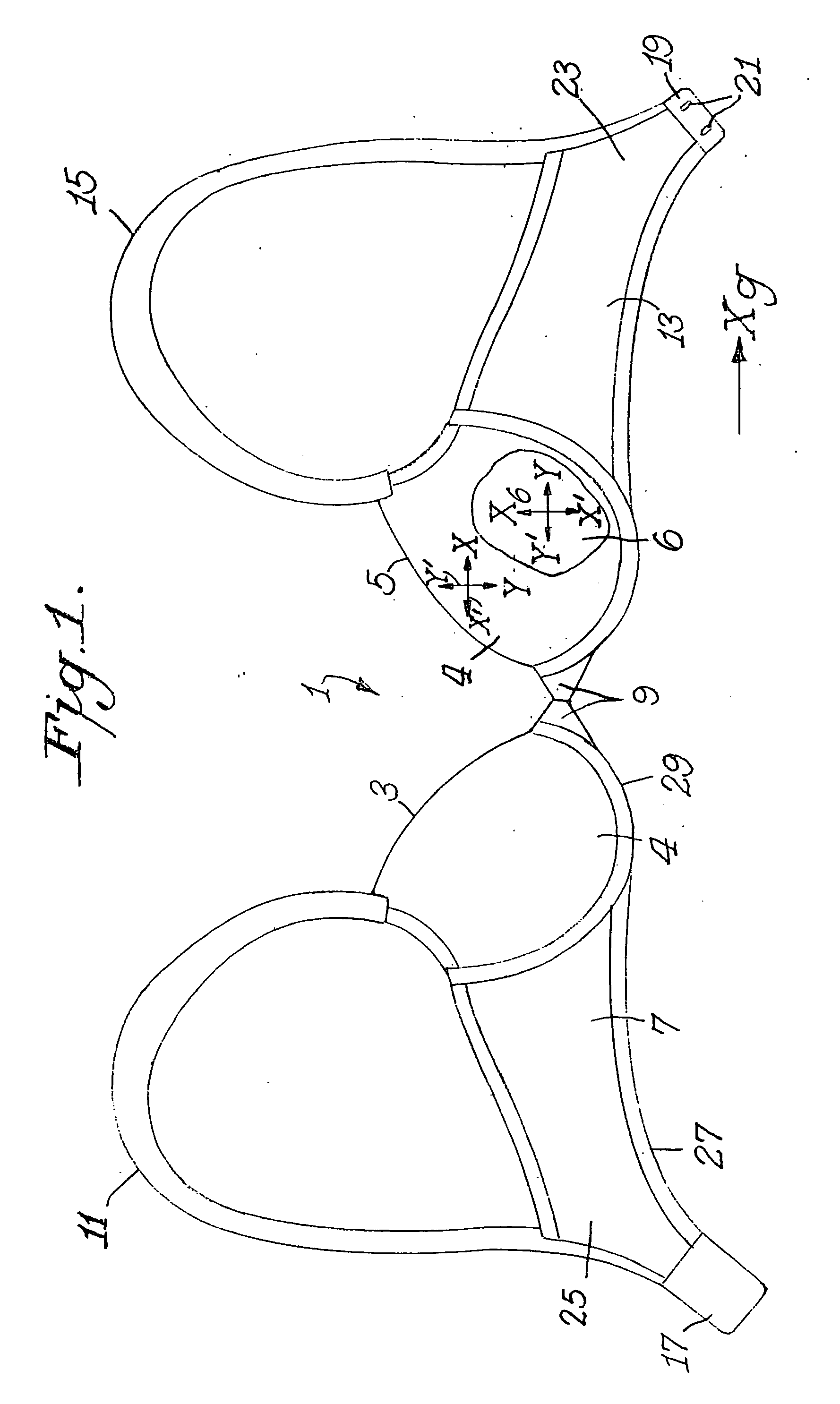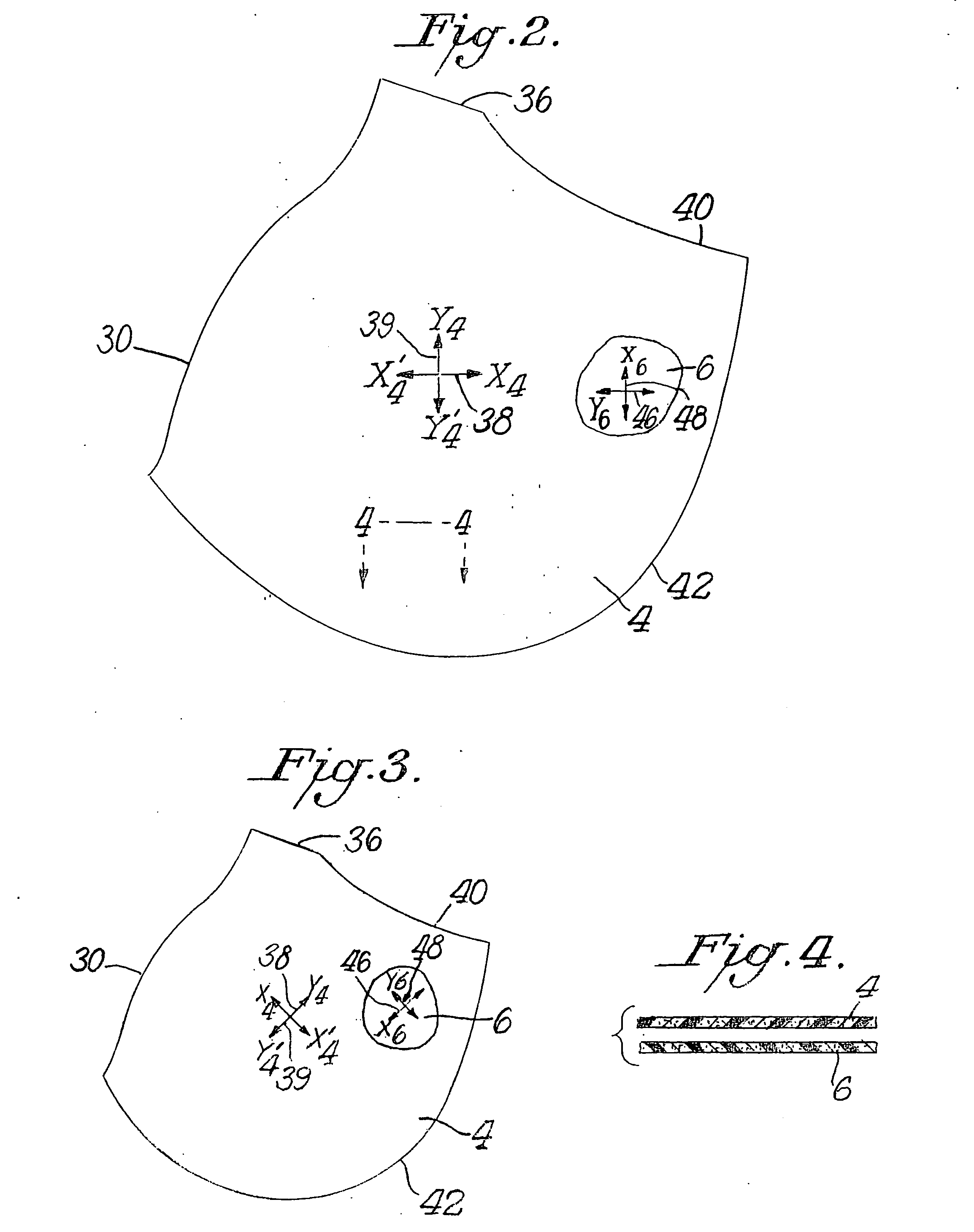Brassiere construction using multiple layers of fabric
- Summary
- Abstract
- Description
- Claims
- Application Information
AI Technical Summary
Benefits of technology
Problems solved by technology
Method used
Image
Examples
examples
[0101]
Hysteresis [J]S = Std dev / FabricL&LW&WL&Wmean * 100%1A0.11390.11210.11511.331C0.17960.08040.120439.402C0.09820.15550.125922.60
[0102] The last column of the table, coefficient of variation (S), provides a basis for comparison of the variation of the three results: L&L, W&W, and L&W for each fabric. The coefficient of variation (S) is the standard deviation of the 3 measurements divided by the mean and then multiplied by 100%.
[0103] Fabric 1A (commercially available from Penn Asia, Thailand) was made with Lycra® T902C spandex and the S value was within the limits for the invention. Fabric 1C (commercially available from H. Warshow and Sons, Inc., Milton, Pa.) was made with Lycra® T162B spandex and the S value is too high for the invention. Fabric 2C (commercially available from Ruey Tay, Taipei, Taiwan) was made with Lycra® T162C spandex and the S value is too high for the invention.
PUM
 Login to View More
Login to View More Abstract
Description
Claims
Application Information
 Login to View More
Login to View More - R&D
- Intellectual Property
- Life Sciences
- Materials
- Tech Scout
- Unparalleled Data Quality
- Higher Quality Content
- 60% Fewer Hallucinations
Browse by: Latest US Patents, China's latest patents, Technical Efficacy Thesaurus, Application Domain, Technology Topic, Popular Technical Reports.
© 2025 PatSnap. All rights reserved.Legal|Privacy policy|Modern Slavery Act Transparency Statement|Sitemap|About US| Contact US: help@patsnap.com



